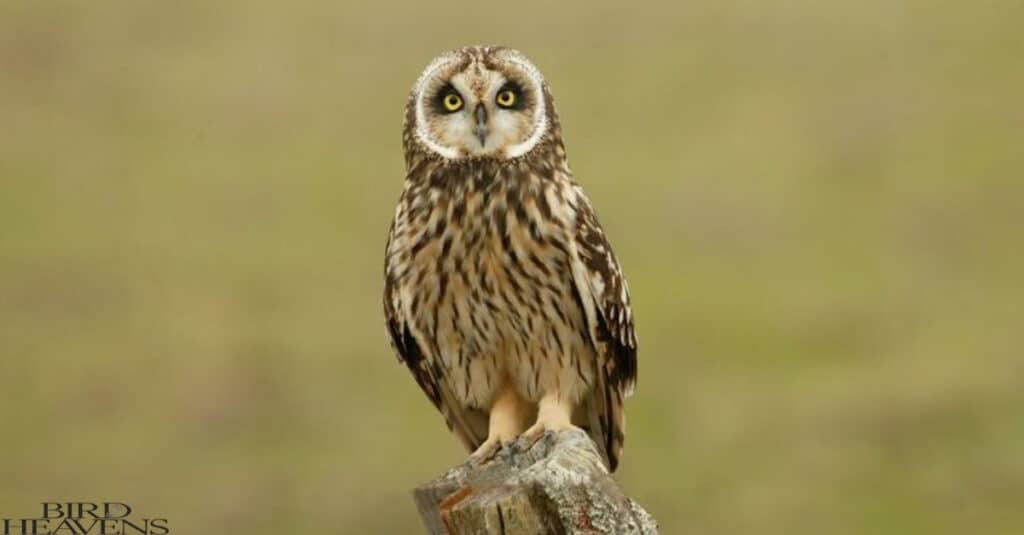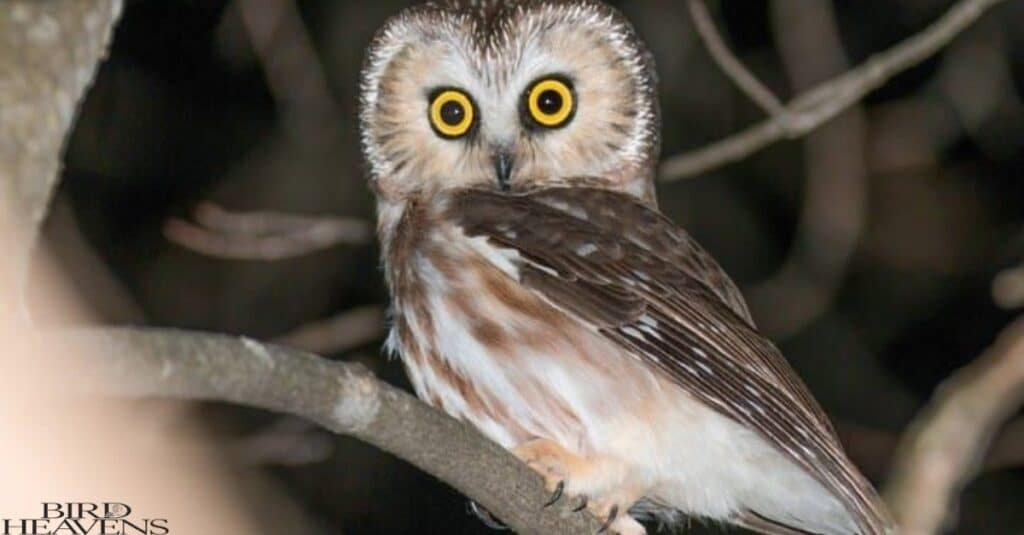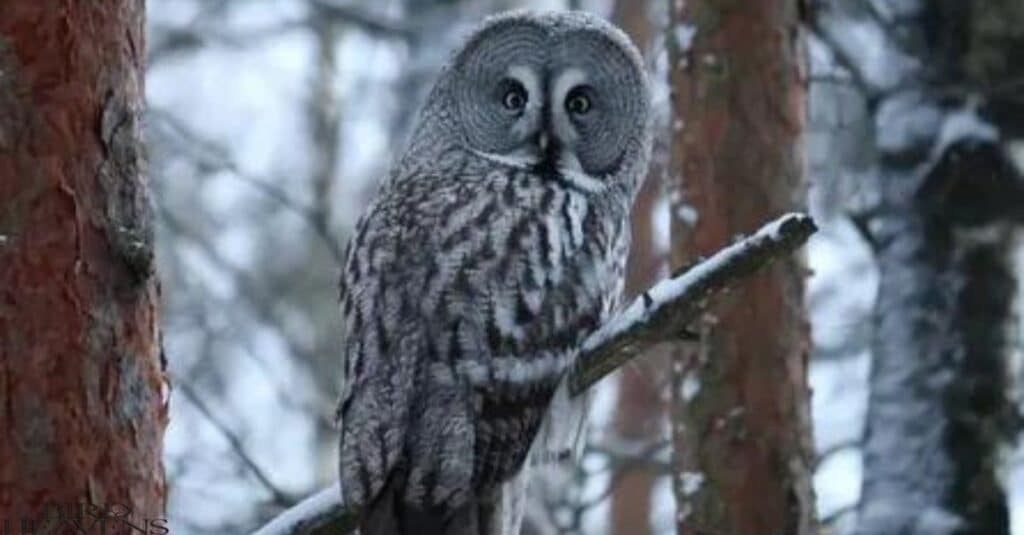Owls In Michigan – The Complete Guide To Michigan Owls
Michigan is home to 11 owl species, including year-round residents like the Great Horned, Barred, and Eastern Screech-Owls, and seasonal visitors such as the Snowy Owl. These nocturnal hunters play vital roles in ecosystems, from forests to urban areas.
Conservation efforts focus on habitat preservation and citizen science projects. Responsible observation and reporting of sightings contribute to research and protection of Michigan’s diverse owl population.
Michigan’s Owl Diversity
From the mighty Great Horned Owl to the diminutive Northern Saw-whet Owl, these birds play crucial roles in Michigan’s ecosystems. They help control rodent populations and serve as indicators of environmental health.
Fun Fact: Michigan is home to 11 owl species, ranging from year-round residents to seasonal visitors!
Key Characteristics of Owls
Before we dive into specific species, let’s look at what makes owls unique:
- Silent flight: Owls have specialized feathers that muffle sound.
- Exceptional hearing: Many owls can pinpoint prey by sound alone.
- Rotating heads: Owls can turn their heads up to 270 degrees.
- Large eyes: Owls have excellent night vision.
Michigan’s owls are nature’s silent guardians, keeping watch over our forests, fields, and even city parks. Each species tells a unique story of adaptation and survival.
Common Resident Owls of Michigan
1.Great Horned Owl

The Great Horned Owl, often called the “tiger of the sky,” is a year-round resident in Michigan. These powerful predators are easily recognized by their large size and distinctive ear tufts.
Habitat and distribution
Great Horned Owls are adaptable birds, found in various habitats across Michigan. You’ll spot them in:
- Dense forests
- Open woodlands
- Urban parks
- Suburban areas
They’re not picky, making homes from the Upper Peninsula’s boreal forests to Detroit’s city parks.
Physical characteristics
These owls are impressive in size and appearance:
- Length: 18-25 inches
- Wingspan: 3-5 feet
- Weight: 2-5 pounds
Their most striking features include:
- Large, yellow eyes
- Prominent ear tufts (not actually ears!)
- Mottled gray-brown plumage
- Powerful talons
Hunting behavior
Great Horned Owls are fierce hunters, known for their strength and versatility. Here’s what makes them top predators:
- Excellent night vision
- Near-silent flight
- Powerful grip (can exert up to 500 pounds per square inch!)
They hunt a wide variety of prey, including:
- Small mammals (rabbits, squirrels)
- Other birds (even other owls!)
- Reptiles and amphibians
Nesting habits
When it comes to nesting, Great Horned Owls are opportunists:
- Often use abandoned nests of other large birds
- May nest in tree cavities or on cliff ledges
- Breeding season starts early, often in January or February
- Usually lay 2-3 eggs per clutch
2.Barred Owl

The Barred Owl, with its distinctive “who-cooks-for-you” call, is another common sight (or rather, sound) in Michigan’s forests.
Preferred habitats
Barred Owls favor mature forests, particularly:
- Mixed deciduous-coniferous woods
- Swampy areas
- Riparian zones along rivers and streams
In Michigan, they’re found throughout the state but are more common in the Lower Peninsula.
Distinctive features
These medium-sized owls have several unique characteristics:
- Round head with no ear tufts
- Dark brown eyes (most owls have yellow eyes)
- Streaked brown and white plumage
- “Barred” pattern on chest (hence the name)
| Feature | Description |
| Size | 16-25 inches long |
| Wingspan | 38-49 inches |
| Weight | 1-2.3 pounds |
Vocalizations and calls
Barred Owls are known for their distinctive hooting:
- Classic “who-cooks-for-you” call
- Variety of other vocalizations, including growls and “monkey-like” sounds
- Often call during the day, unlike many owl species
Diet and hunting techniques
These owls are versatile hunters:
- Prefer small mammals like mice and voles
- Also eat birds, amphibians, and insects
- Hunt from a perch, swooping down on prey
- Use their keen hearing to locate prey in dense forests
3.Eastern Screech-Owl

The Eastern Screech-Owl is a small but charismatic resident of Michigan’s woodlands and suburbs.
Color morphs
One of the most interesting aspects of Eastern Screech-Owls is their color variation:
- Gray morph: Most common in Michigan
- Red (rufous) morph: Less frequent but still seen
- Brown morph: Rarest of the three
These color differences don’t affect behavior or habitat preference.
Size and appearance
Eastern Screech-Owls are tiny compared to their larger cousins:
- Length: 6.3-9.8 inches
- Wingspan: 18-24 inches
- Weight: 4.3-8.6 ounces
Despite their name, they don’t actually screech. Key features include:
- Large head with prominent ear tufts
- Yellow eyes
- Intricate patterns of gray or red-brown feathers
Urban adaptability
These small owls have adapted well to human presence:
- Often found in city parks and suburban areas
- Use nest boxes provided by humans
- Tolerate moderate levels of human activity
Breeding patterns
Eastern Screech-Owls have interesting breeding habits:
- Monogamous, often mating for life
- Nesting season typically March to May
- Use natural tree cavities or artificial nest boxes
- Lay 2-6 eggs per clutch
4.Snowy Owl

The majestic Snowy Owl is a winter visitor to Michigan, drawing birders from far and wide.
Winter migration patterns
Snowy Owls breed in the Arctic tundra but sometimes venture south in winter:
- Irregular “irruptions” bring them to Michigan
- More likely to be seen in years with low lemming populations in the Arctic
- Typically arrive in November and stay until March or April
Habitat preferences in Michigan
When in Michigan, Snowy Owls favor open areas that resemble their tundra home:
- Beaches and dunes along the Great Lakes
- Open fields and grasslands
- Airports (which can pose risks to both owls and planes)
Hunting strategies on open land
Snowy Owls have adapted to hunting in treeless environments:
- Often hunt during the day, unlike most owls
- Perch on the ground or low objects to spot prey
- Primary diet includes small mammals, but they’ll also take birds and fish
You Might Like >>How Long Do Quail Live
5.Short-eared Owl

The Short-eared Owl is a grassland specialist that visits Michigan during migration and winter.
Grassland habitats
These owls prefer open landscapes:
- Prairies and meadows
- Agricultural fields
- Marshes and wetlands
In Michigan, they’re most often seen in the southern part of the state where such habitats are more common.
Diurnal hunting behavior
Unlike many owls, Short-eared Owls are often active during daylight hours:
- Peak activity at dawn and dusk
- Hunt by flying low over grasslands
- Use their exceptional hearing to locate prey
Conservation status in Michigan
Short-eared Owls face challenges in the state:
- Listed as endangered in Michigan
- Habitat loss due to development and changing agricultural practices
- Climate change may affect their wintering grounds
Conservation efforts focus on preserving and restoring grassland habitats.
6.Long-eared Owl

The Long-eared Owl is an elusive forest dweller that’s present year-round in parts of Michigan.
Forest dwellers
These owls prefer dense woodlands:
- Coniferous or mixed forests
- Often near open areas for hunting
- Use abandoned crow or hawk nests for breeding
Camouflage adaptations
Long-eared Owls are masters of disguise:
- Elongated body and ear tufts help them blend with tree bark
- Streaked brown plumage provides excellent camouflage
- Often roost close to tree trunks, becoming nearly invisible
Communal roosting behavior
One of the most interesting behaviors of Long-eared Owls is their tendency to roost in groups:
- Winter roosts can contain dozens of owls
- Roosts are often used year after year
- Provide protection from predators and harsh weather
7.Northern Saw-whet Owl

The tiny Northern Saw-whet Owl is a year-round resident in parts of Michigan, though it’s rarely seen due to its small size and secretive nature.
Small size and habitat preferences
These owls are among the smallest in North America:
- Length: 7-8.3 inches
- Wingspan: 16.5-18.9 inches
- Weight: 2.3-5.3 ounces
They prefer dense coniferous or mixed forests, especially those with:
- Cedar swamps
- Spruce-fir forests
- Deciduous woodlands with dense understory
Migratory patterns
While some Saw-whet Owls are year-round residents, others migrate:
- Fall migration typically occurs from late September to November
- Spring migration happens in March and April
- Some individuals move south for winter, while others stay put
Unique vocalizations
The name “Saw-whet” comes from one of their calls, which sounds like a saw being sharpened on a whetstone:
- Main call is a repeated “toot-toot-toot”
- Also make a variety of squeaks and whines
- Mostly vocal during breeding season
You Might Like >>Small Black Bird With White Belly
8.Barn Owl

Once more common in Michigan, the Barn Owl is now a rare sight in the state.
Historical presence and current status
Barn Owls were once regular residents in southern Michigan:
- Declined significantly in the mid-20th century
- Now listed as endangered in Michigan
- Last confirmed nesting in the state was in 1983
Conservation efforts in Michigan
Despite their rarity, efforts are ongoing to support Barn Owls:
- Nest box programs in suitable habitats
- Preservation of grasslands and open areas
- Public education about the importance of these owls
Distinctive heart-shaped face
Barn Owls are easily recognized by their unique appearance:
- Heart-shaped facial disk
- Long legs
- Pale coloration with speckled plumage
9.Boreal Owl

The Boreal Owl is a rare resident of Michigan’s northernmost forests, particularly in the Upper Peninsula.
Northern Michigan habitats
These owls prefer dense boreal forests:
- Spruce-fir forests
- Mixed coniferous-deciduous woodlands
- Often near bogs or other wetlands
Hunting techniques
Boreal Owls have adapted to hunting in dense forests:
- Use their exceptional hearing to locate prey
- Often hunt from low perches
- Primary diet consists of small mammals, especially voles
Challenges in population monitoring
Studying Boreal Owls in Michigan is difficult:
- Low population density
- Remote, often inaccessible habitats
- Nocturnal and secretive behavior
Researchers use a combination of call surveys and nest box monitoring to track these elusive owls.
10.Great Gray Owl

The Great Gray Owl, the largest owl in North America by length, is a rare but exciting visitor to Michigan.
Occasional irruptions
Great Gray Owls typically live further north, but occasionally venture into Michigan:
- Irruptions occur when food is scarce in their normal range
- Most likely to be seen in the Upper Peninsula
- Sightings often cause excitement among birders
Preferred habitats during visits
When in Michigan, Great Gray Owls favor habitats similar to their boreal homes:
- Coniferous and mixed forests
- Open areas within forests for hunting
- Often seen perched on snags or fence posts
11.Northern Hawk Owl

The Northern Hawk Owl is another rare visitor to Michigan, known for its unusual daytime activity.
Unusual daytime activity
Unlike most owls, Northern Hawk Owls are often active during the day:
- Hunt in broad daylight
- Have a falcon-like appearance in flight
- Often perch on exposed treetops
Rare sightings and locations
In Michigan, Northern Hawk Owls are most likely to be seen:
- In the Upper Peninsula
- During winter months
- In open boreal forest habitats
Sightings are infrequent but always noteworthy, drawing birders from across the state.
You Might Like >>Finches In Texas
Owl Conservation in Michigan
Protecting Michigan’s owls is crucial for maintaining healthy ecosystems and preserving biodiversity. Here’s how the state is working to ensure a future for these magnificent birds.
Habitat Preservation Efforts
Preserving suitable habitats is key to owl conservation:
- Protection of old-growth forests for species like Barred Owls
- Maintenance of grasslands for Short-eared Owls
- Creation of urban green spaces for adaptable species like Eastern Screech-Owls
Impact of Climate Change on Owl Populations
Climate change poses new challenges for Michigan’s owls:
- Shifting prey populations
- Changes in vegetation and forest composition
- Altered migration patterns for some species
Citizen Science Projects and Owl Monitoring Programs
Everyone can contribute to owl conservation:
- Michigan Owl Survey: Annual volunteer-driven count
- Project SNOWstorm: Tracks Snowy Owl movements
- eBird: Platform for reporting owl sightings
How to Observe Owls Responsibly
Watching owls can be an incredible experience, but it’s important to do so in a way that doesn’t harm these sensitive birds.
Best Practices for Owl Watching
- Keep your distance
- Use binoculars or spotting scopes
- Avoid using flash photography
- Don’t play recordings of owl calls (it can stress the birds)
- Stay on designated trails
Photography Ethics
- Don’t bait owls for photos
- Avoid disturbing nesting sites
- Share location information responsibly (some rare owl locations should be kept private)
Reporting Sightings to Contribute to Research
Your observations can help scientists:
- Use eBird to log your sightings
- Participate in local bird counts
- Report any unusual behavior or sick/injured owls to wildlife authorities
You Might Like >>Do Hawks Hunt At Night
Conclusion
Michigan’s owl population, ranging from the small Northern Saw-whet Owl to the powerful Great Horned Owl, plays a vital role in maintaining ecological balance.
Observing and appreciating these owls can help support their conservation, especially as they face threats like habitat loss and climate change.
By preserving habitats, supporting research, and promoting awareness, we can protect these fascinating nocturnal birds for future generations, ensuring their presence in Michigan’s natural landscape for years to come.
So grab your binoculars, head out to a local park or forest, and keep your eyes (and ears) open. You never know when you might encounter one of Michigan’s magnificent owls!

Andrew Paul is a renowned ornithologist and founder of Bird Heavens. With my extensive expertise in bird behavior and habitat preservation,I will insightful content on species identification and conservation.My Future plans include interactive workshops and online courses to foster a global community of bird enthusiasts committed to conservation and appreciating avian life. Join me at Bird Heavens







